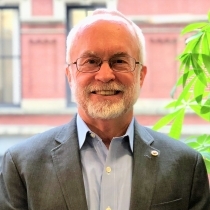According to the Institute of International Education, approximately 1.1 million international students studied at U.S. colleges and universities during the 2018-19 school year, or about 5.5% of the nation’s higher education student population. That segment of the student population, however, has been decreasing each year since Donald Trump won the White House, as the Administration has sought increased restrictions on employment-based visas and, most recently, attempted to restrict the ability of foreign students to attend programs being held remotely because of the coronavirus. Adding to these measures are very real proposals to limit work authorization programs that have been in place for decades and are a major factor drawing foreign students to U.S. colleges and universities. Curtailing such programs could decimate our foreign student population.

What can educational institutions do to mitigate this impact? There are two areas for action: tactically, they can explore alternative visa classifications to retain and attract students; bigger picture, they can fight back against the changes.
Alternatives to F-1 employment authorization
The beauty of the existing foreign student employment authorization is its ready accessibility to hundreds of thousands of students each year. A student who has never even been to the U.S. knows that he or she will be able to obtain work authorization upon graduation through the F-1 practical training program at no cost to a prospective future employer and with relatively little government paperwork. There is no other visa category, or combination of categories, that can replace practical training. However, when faced with new limitations imposed by the Administration, there are alternatives to consider.
1.Expanded use of the J-1 (exchange visitor) visa
The J-1 category has a “trainee” work authorization program which is available to individuals who have a foreign degree and at least one year of prior related work experience outside the U.S. in the occupational field or five years of related work experience outside the U.S. This program provides the opportunity for up to 18 months of employment that is designed to prepare the trainee for a job abroad. University foreign student offices could assist qualifying students in obtaining employment as J-1 trainees.

The J-1 visa also has a student program that many colleges and universities already participate in. Higher education institutions should consider expanding J-1 enrollment as much as possible, as the student classification offers many of the benefits of the F-1 category including the opportunity for post-graduation employment.
The principal impediment to dramatically expanding J-1 student enrollment is that the student may not be supported substantially by personal or family funds. The regulations contemplate funding directly or indirectly by the U.S. government, the government of their home country, an international organization of which the U.S. is a member by treaty or statute, or any source other than personal or family funds. Another drawback is that a J-1 student supported by funding from the U.S. or home government may be required to return to their home country for two years before working under the H-1B visa or becoming a permanent resident.
It should be noted that among the Administration’s proposals is the elimination of both the J-1 student and trainee categories.
2. The H-3 visa
An individual may also come to the U.S. on an H-3 visa for up to 2 years to train in any field that is not available in the student’s home country, other than graduate medical education and training. This option requires employer sponsorship and a demonstration that the trainee will not be engaging in productive employment unless it is incidental or necessary to the training, and that the individual is training to pursue a career outside the U.S.
The H-3 visa can be challenging to obtain, and the specifics of the training program must be carefully documented. There is no limit to the number of H-3 visas available, although in reality this is not a well-used visa classification – approximately 3,000 such visas are issued annually.
Challenging proposed restrictions
In addition to taking creative visa measures, the academic community can also proactively fight to preserve the programs that are so important to attracting foreign students. It is far better to preserve something that works for hundreds of thousands of students than to try to find alternatives to benefit only a small percentage. Universities around the country have already successfully campaigned for the ability of students to come to and remain in the U.S. They won a 2018 lawsuit that would have made it easier for the Department of Homeland Security to find that students had violated their immigration status, and most recently they convinced ICE to rescind a policy that would threaten the immigration status of existing international students who are forced to study online so that university campuses can avoid becoming coronavirus outbreak hotspots.
Two lessons from these experiences are clear.
- Where Administration action exceeds executive authority, it needs to be challenged in the courts. Colleges and universities should look for occasions to act together in this, as they did when opposing the proposal to bar foreign students from attending fully online programs. The national higher education community joined together in several lawsuits challenging this directive, and the Administration backed down in a matter of days.
- Where Administration proposed rulemaking is misguided or harmful, the academic community should harness its considerable resources to persuade Congress, the media and the public of the damage that will be caused by the proposed rules. Partnering with business leaders is a powerful way to show that the U.S. needs to retain its talented foreign graduates to remain globally competitive, as well as to jumpstart essential research in coronavirus vaccines and other needed technologies.
The ability of foreign students to work in the U.S. after graduation is a critical reason that studying here is so attractive to people from other countries. There is no existing work authorization program that can be applied to students across the board, in anywhere near the numbers necessary to be meaningful. However, as we have seen, colleges and universities do have alternatives—and by acting together on a broader scale, they can and will accomplish meaningful and important action.
Christina M. Elder is a senior attorney and Philip C. Curtis is a co-managing partner at Chin & Curtis LLP, a firm specializing in business immigration law.





